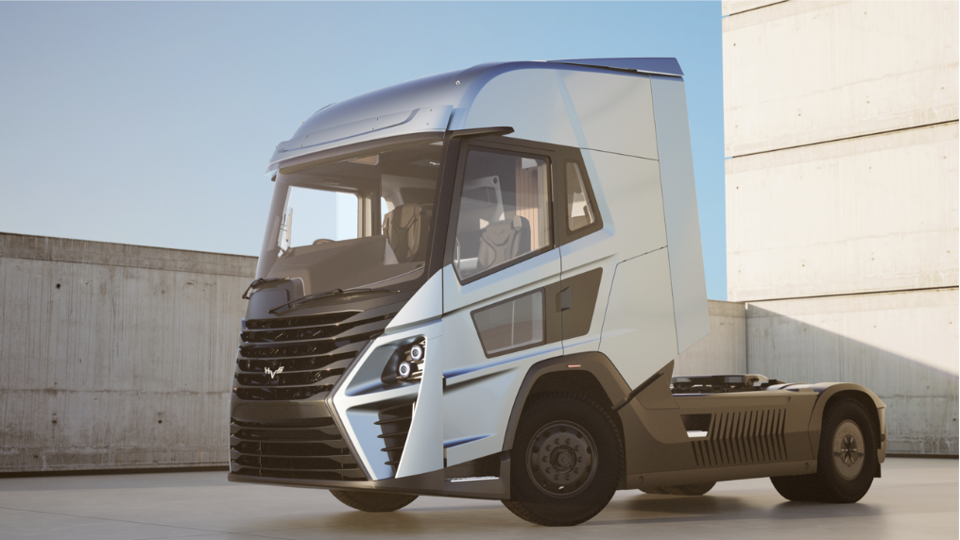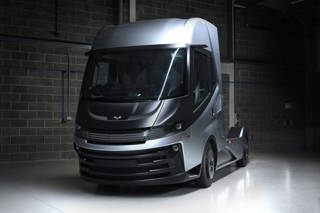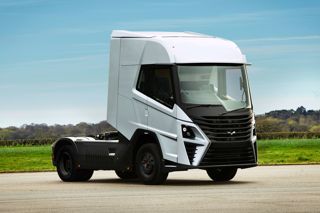The Government needs to take a leading role to ensure the UK does not get left behind in the race to zero emission transport, says Hydrogen Vehicle Systems (HVS).
The Glasgow-based company, which is developing a hydrogen fuel cell heavy goods vehicle, is working with the Government to develop the technology and has also received funding through the Advanced Propulsion Centre (APC), Innovate UK, CCAV and Scottish Enterprise and Energy Technology.
However, it warns there is a risk the UK could get left behind with the development of zero-emission technologies as the rest of the world increases its investments.
Karen Preston, sales and marketing director at HVS, said: “The UK had a leading role but I think we’re at a plateau now with everything that is going on in the US with the Inflation Reduction Act and with the investment that’s being made by the EU and Horizon Europe.
“Operators are seeing European governments fund 60% to 80% of the difference between a diesel and alternative fuel vehicle.
“In Germany and Austria it’s 80%. I think it’s about 65% in Ireland. Currently it’s £25,000 in the UK. That was fine two or three years ago with the introduction of electric vans, but that’s not really going to work when you have to scale up to much bigger kit.
“We don’t want to waste this opportunity we’ve got. The UK has a huge heritage of automotive design and manufacture, and if we’re not careful we’re going to lose that; the danger is there could be a brain drain.
“To avoid this, we need a collaborative approach: the Government needs to drive it or it needs to facilitate this.
“We need a support structure for battery manufacture, hydrogen infrastructure: all of this technology needs to be onshore.
“If we work together, we’re not going to be left behind. And I think that’s the key.”
HVS unveiled its 40-tonne HGV technology demonstrator in April, with the company having the objective of having the first indigenous UK designed and developed hydrogen-electric HGV on the market.
Depending on the journey – the route travelled, road conditions and driving style, the HGV has the capacity to travel up to 370 miles.
The company says refuelling will take a similar time to filling a truck with diesel (around 15 to 20 minutes).
Many hydrogen fuelling stations will be located at existing commercial vehicle forecourts, using dispensers that look very similar to conventional petrol and diesel ones, but with a different nozzle.
In May, HVS invited fleet operators to register expressions of interest in trialling its HGVs prior to purchasing.
Supported trials are set to commence in Q4 2025 once the pre-production prototyping phase is completed and the HGVs are ready to enter volume production in the UK.
Preston said a number of high-profile fleets responded to the invitation and are “really keen to work with us to trial our vehicles”.
She added: “We are working very closely with them to ensure that the technology that we that we have is right for their particular operation.”
Preston said the biggest obstacle to the uptake of hydrogen fuel cell vehicles in the future is ensuring there is sufficient refuelling infrastructure.
She added: “The challenge is the availability of renewable energy sources and there is a lot of activity now to scale up to green hydrogen.
“Putting the electrolyser next to the production site makes sense so you have green hydrogen at source so you don’t have to pay the cost of distribution through the grid.
“We know people who are working along those lines, so we want to work all the fuel manufacturers and producers to understand and support the operator in addressing these challenges.”























Login to comment
Comments
No comments have been made yet.